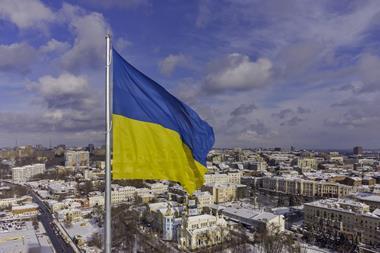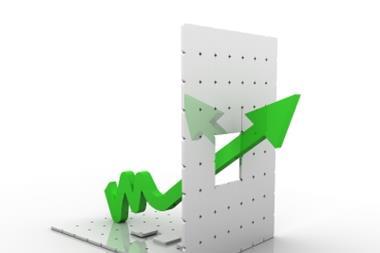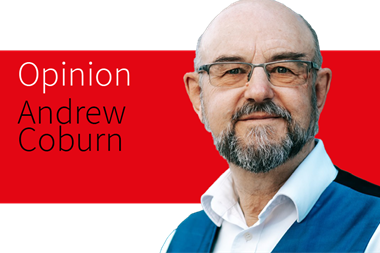Today’s volatile risks will impact your supply chain in unique ways; here are three areas to consider
In 2022, it seems like everywhere you look there is a new risk to account for.
Global inflation and looming recession. A war in Ukraine. Political instability and government changes in many regions. The Euro falling to a low not seen in decades. A pandemic that just won’t go away, and a supply chain that keeps stuttering and trying to catch back up. And of course, a climate whose change seems to be inching irrevocably to an unknown future.
Even in a time of unprecedented uncertainty, there are things we can do when it comes to limiting risk and making the risks we can’t avoid more palatable.
Particularly when it comes to working across suppliers and partners who make up your supply chain, there are so many volatile situations and variables associated with them that you can’t account for, so it’s important to prepare for the things you can.
“Hope for the best, prepare for the worst” is feeling like a good mantra as we head toward the end of 2022 and beyond.
Here are three areas businesses should focus on to minimise the chances that broader worldwide risks associated with their supply chains will negatively impact the company overall.
1. Continuity
It’s hard to take anything as a given right now, which means any companies with suppliers and partners they rely on need to make sure that these crucial relationships aren’t at risk of being upended by some geopolitical or economic shift.
For example, if you rely on suppliers in Ukraine or a bordering country, you should prepare for the possibility that there will be disruptions at some point—and potentially lengthy ones. The same holds true for partners in areas that are growing more prone to coastal flooding or seasonal storms.
I’m not advocating that you cut ties with longstanding partners who might fall into one of these categories. But multi-sourcing and more carefully building out supply bases in coming months is highly recommended for resiliency and risk reduction.
The focus should be less on achieving volume discounts by consolidating partners, and more on creating redundancy in case of disruptions at one or more suppliers. Factor in the geopolitical and climate stability of suppliers when making decisions, not solely basing contracts on lowest cost.
2. ESG compliance
ESG (environmental, social, and governance) requirements have taken centre stage in recent years, and they’re only getting started. The EU’s Corporate Sustainability Reporting Directive (CSRD) will take full effect in 2023, and in the early part of 2022 the U.S.’ Securities and Exchange Commission proposed new requirements on what companies need to disclose about their ESG efforts.
Notably, in both of these examples, Scope 3 emissions are required to be disclosed. Scope 3 is the category for emissions that come from other companies connected down an organisation’s supply chain.
Gathering this data and preparing accurate reporting across not just one company but the full supply chain is no small feat, and now is the time to begin the process of putting those tools in place. Actually, the best time for it was months and months ago, but the second-best time is now. Significant fines are waiting for those who aren’t prepared.
It’s important to remember that businesses not only need to remain compliant in their home country and region, but also make sure they are in line with the rules and regulations of the regions where their partners and suppliers are located.
If a supplier is breaking compliance rules as part of their business with your company, you could be held partially liable, even if you didn’t cause it or were unaware it was happening.
3. Sanctions and geopolitics
Sanctions are a common thorn in the side of companies doing business globally. As we’ve seen in recent months after Russia’s invasion of Ukraine, situations can evolve rapidly and that holds true for “blocked” entities.
One partner that was in the clear one week might be hit by new sanctions the next, and companies need to make sure they have a means of monitoring these changes and acting quickly to replace blocked suppliers when needed.
Sanctioned organisations often utilise shell companies to keep operating normally, so it’s not enough to just screen suppliers by name—identifying their ownership is crucial as well.
And it’s not just the war in Ukraine; there are always new geopolitical considerations that could require a company to shift suppliers quickly.
Even just the last couple of weeks has shown how fast things can change: Sri Lanka’s president resigned and fled amid a state of emergency due to ongoing protests, and the assassination of former Japanese Prime Minister Shinzo Abe (in a country that has been known for stable democracy and minimal violence for decades) have sent shockwaves through the international community. Reassessing where and who you do business with is something that should happen regularly, not once in a while.
Moving forward
Even if you won’t be on the hook for any fines due to partners running afoul of ESG regulations or international sanctions, keep in mind that there is a real reputational risk involved with being in business with organisations who are publicly seen as being irresponsible or not following rules.
If a business has made promises around sustainability (or any other area, like diversity hiring or better workplace conditions) that they can’t or won’t adhere to—how many companies have said they will be “net zero emissions by 20XX,” and how many of them will actually meet that goal?—that bad press will be coming and it’s best not to be standing beside them when it does.
It’s the job of risk leaders to account for risk, and 2022 has shown that they have their work cut out for them.
The global risks out there now and in the near future are real, and they compound upon each other. Supply chains are crucial lifelines, needing to stay intact for most companies to remain in business, so creating redundancy and resiliency in procurement and third-party management to handle multiple broad risks at once should be at the top of strategic planning decisions in the near future.
Jag Lamba is founder and CEO, Certa




















No comments yet